
views
X
Research source
Learning About the Tabla
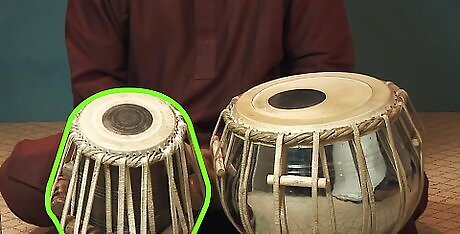
Understand the different parts of the tabla. The tabla consists of two separate wooden drums, one smaller and one larger. The smaller drum, positioned on the right, is called the daylan (or tabla) and the larger drum, positioned on the left, is called the baylan. Each drum makes a different tone but together they make the distinctive sound we associate with the tabla, a sound that is central to classical Indian music.
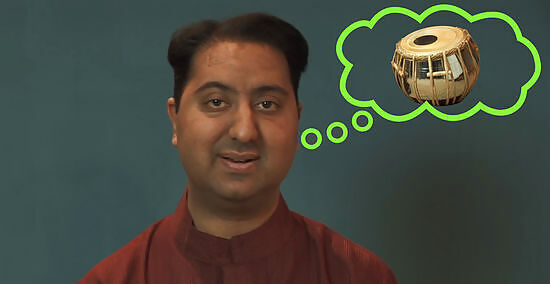
Learn how the tabla is made. In order to play this drum well and keep your instrument in good working condition, it is important to understand how it is made. The daylan is made of wood, usually from a Neem or Shisham tree. The baylan is made out of metal or clay. The two drums are made of different materials so that each has a distinct sound all its own. Both drums are covered with a goatskin drum heads. The drum heads are attached to the drum with long leather strips that attach to a leather ring at the bottom of the drum. In order to tune the drum, tabla makers insert wooden blocks between the drum body and the leather strips. Moving the wooden blocks up and down along the drum adjusts the tightness of the drum head and tone of the drum. An element that is unique to the tabla is the application of the sinai, a patch of iron fillings mixed with rice paste applied to the surface of the drum, right on the goat hide, which allows for further tuning of the drums.
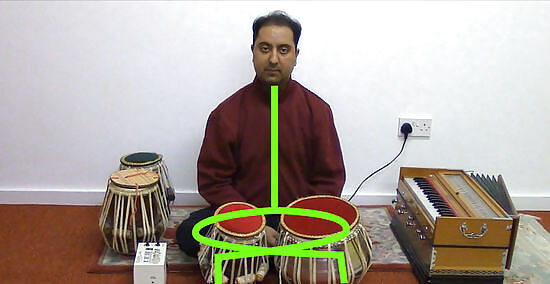
Learn how to sit while playing tabla. Before starting to play, you need to learn how to position your body correctly, as posture and body position are very important to playing the tabla. Sit cross legged on the ground. This will position your body on the same level as your tabla. Place the drums in front of you, close enough to almost touch your legs, with the space between the drums right at the center of your body. The larger drum, on your left, should sit flat, with the top of the drum facing straight up. The face of the smaller drum, on your right, should be facing away from you, at approximately 35 degrees. The position of your waist should straight. Keep your posture upright. You should put one hand on each drum. Make sure that each of your hands can comfortably reach the drums in front of them. The placement of both hands should not be stiff. It should be in comfortable position, so that playing tabla is easy.
Playing the Tabla
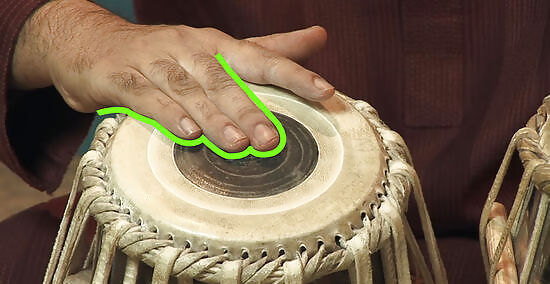
Position your hand on the dayan, the smaller drum on the right. The three fingers starting from the right of your hand, your middle finger, ring finger and little finger, should be positioned on the sinai at the center of the drum. Make sure that your index finger is raised up away from the head of the drum just a little bit.Rest the heel of your hand on the edge of the drum.

Practice hitting the daylan. Keep your contact with the drum centered on the sinai at the center of the drum head. Lift your hand just a few inches and then bring down your middle, ring, and little fingers onto the center of the drum. This is a stroke called Te. Lift your hand just a few inches and then bring down just your pointer finger into the very center of the sinai. This is a stroke called Teh.
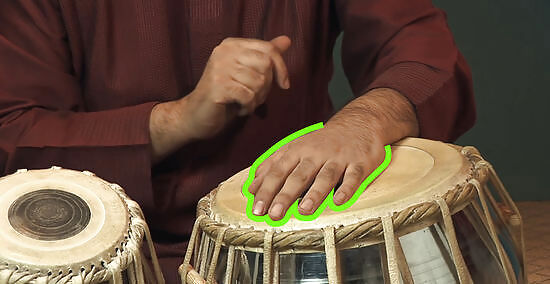
Position your left hand onto the bayang, the larger drum on your left. Place the palm of your hand on the drum, so that your hand covers up the syahi and your elbow is bent. If you are in the correct position the heel of your hand will be just covering the syahi and your forearm will be resting on the edge of the drum. The sinai on the baylan is positioned off center. Make sure your drum is positioned so that the sinai is at about 2 o'clock, if the top of the drum was a clock. This makes it comfortable for your palm to cover it and your forearm to rest on the edge of the drum.
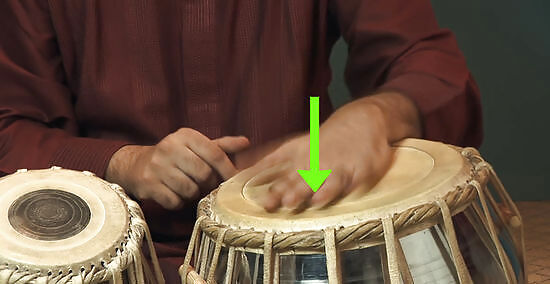
Practice hitting the baylan. Keep your forearm resting on the drum and simply lift your hand up, flexing at the wrist, and bring it down gently. This stroke is called Ke.
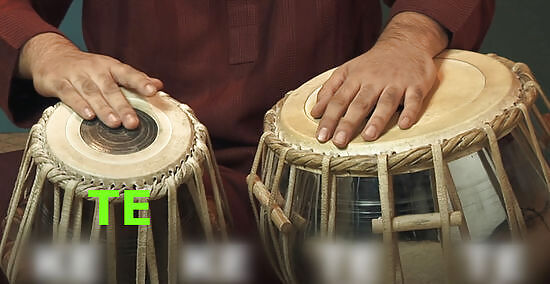
Learn how to follow tabla bol (wordings). Indian percussionists follow a system of wordings, as opposed to a western system of musical notation. Each word in a bol stands in for a sound you make on the drum, for example the strokes Te and Teh that you have already learned. A series of these words will create a bol.

Practice playing the tabla. While practicing, keep the rhythm slow so that you can focus on hitting the drum and combining sounds correctly. Don't try to practice more than one tabla bol at a time. Repeat the practice of same bol at least one hour a day. While practicing, avoid talking with others. Concentrate on tabla playing.
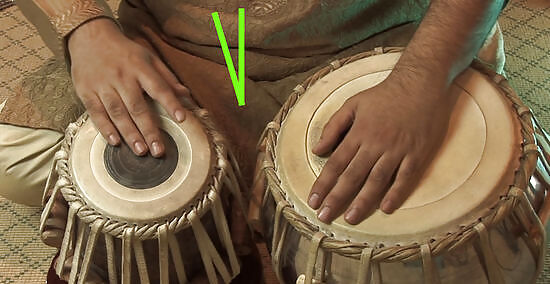
Increase the rhythm gradually after you have mastered the basic stroke of playing the tabla. Your goal should be to increase speed but not at the expense of losing accuracy.
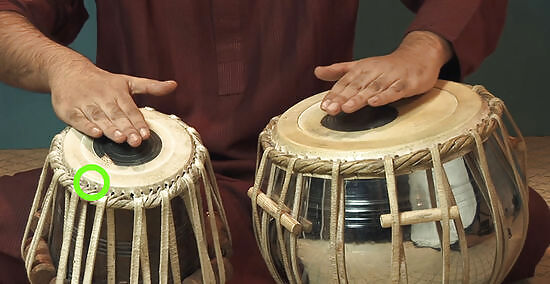
Play around with different sounds you can make on the drum. Once you have mastered the basics of the tabla, feel free to experiment with your own style. For example, use the force of index finger on the edge of tabla to create a nice tone.












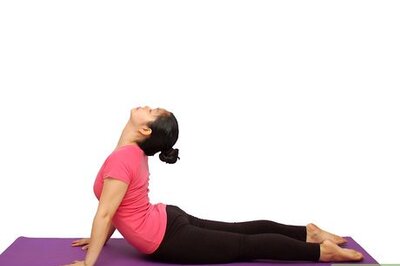
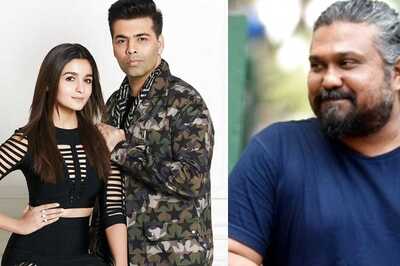

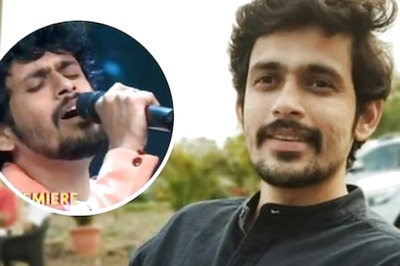
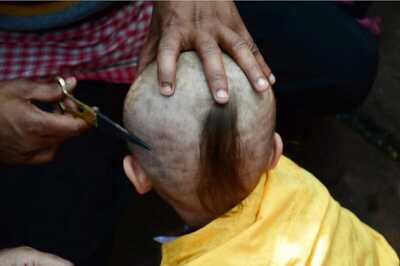
Comments
0 comment